Meindl, Eugen Albert Max “Papa”, born on 16-07-1892 in Donauschingen,  in Baden Wurttemberg, joined the Army, age 20, as a Fahnenjunker in the Artillery and was commissioned as a Leutnant in February 1914. Eugen served with that branch of service throughout World War I, spending most of it with the 67th Lower Saxon Feldartillerie Regiment; he won the Iron Cross Second Class
in Baden Wurttemberg, joined the Army, age 20, as a Fahnenjunker in the Artillery and was commissioned as a Leutnant in February 1914. Eugen served with that branch of service throughout World War I, spending most of it with the 67th Lower Saxon Feldartillerie Regiment; he won the Iron Cross Second Class ![]() in July 1915 and the First Class in January 1916. He was promoted to Oberleutnant in April 1917, subsequently he was decorated with the Knight’s Cross of the Saxon Albert Order
in July 1915 and the First Class in January 1916. He was promoted to Oberleutnant in April 1917, subsequently he was decorated with the Knight’s Cross of the Saxon Albert Order  and the Knight’s Cross of the Baden Order of the Zahringer Lion
and the Knight’s Cross of the Baden Order of the Zahringer Lion  . Meindl’s distinguished war record earned him a place among the 100,000 men retained in the new 100.000 men Reichswehr of the post-war Weimar Republic. He served initially as a battery officer with the 13th Artillery Regiment, being promoted to Hauptmann in August 1924 and joining the Staff of the Wehrkreis, in Stuttgart.
. Meindl’s distinguished war record earned him a place among the 100,000 men retained in the new 100.000 men Reichswehr of the post-war Weimar Republic. He served initially as a battery officer with the 13th Artillery Regiment, being promoted to Hauptmann in August 1924 and joining the Staff of the Wehrkreis, in Stuttgart. Thereafter Meindl served briefly with 5th Jäger Division
Thereafter Meindl served briefly with 5th Jäger Division  before being posted to the War ministry, over the next few years he held a number of staff posts, being promoted to Major in April 1934. In October 1935 he was appointed commander of Ist Artillerie Battailon Regiment 5 and was promoted to Oberstleutnant in August 1936. In November 1938, Meindl transferred to the Gebirgstruppe as commander of the 112th Gebirgsartillerie Regiment of the 3rd Gebirgs Division,
before being posted to the War ministry, over the next few years he held a number of staff posts, being promoted to Major in April 1934. In October 1935 he was appointed commander of Ist Artillerie Battailon Regiment 5 and was promoted to Oberstleutnant in August 1936. In November 1938, Meindl transferred to the Gebirgstruppe as commander of the 112th Gebirgsartillerie Regiment of the 3rd Gebirgs Division,  under commander Generaloberst lEduard Wohlrat Christian Dietl
under commander Generaloberst lEduard Wohlrat Christian Dietl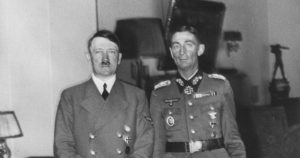
 and was promoted to Oberst in April 1939. (see Adolf Hitler).
and was promoted to Oberst in April 1939. (see Adolf Hitler).
On 23-06-1944, the Ju 52 aircraft carrying Eduard Dietl, General der Infanterie Thomas-Emil von Wickede, age 51  General der Gebirgstruppe Karl Eglseer,
General der Gebirgstruppe Karl Eglseer, 
 Generalleutnant der Gebirgstruppe Franz Rossi, age 54
Generalleutnant der Gebirgstruppe Franz Rossi, age 54  and three other passengers crashed in the vicinity of the small village of Rettenegg, Styria. There were no survivors.
and three other passengers crashed in the vicinity of the small village of Rettenegg, Styria. There were no survivors.
On the outbreak of the war Meindl saw action during the Polish campaign. 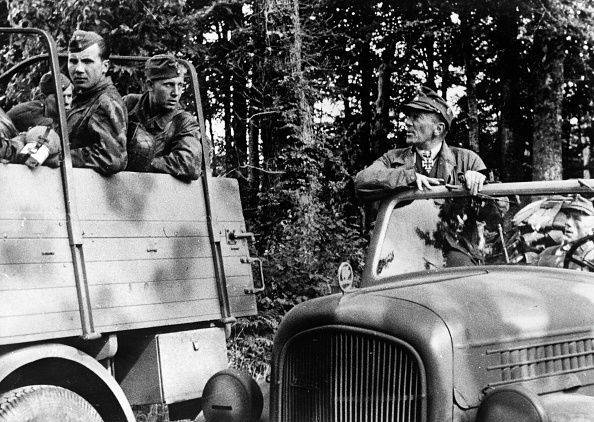
 (see Blücher brothers)
(see Blücher brothers) 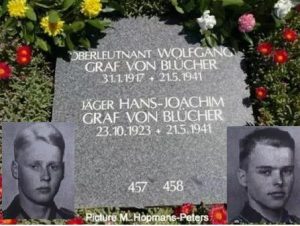 in May 1941; landing near the hotly contested Maleme airfield, he was soon badly wounded
in May 1941; landing near the hotly contested Maleme airfield, he was soon badly wounded ![]() , and had to pass control of the regiment to Oberst der Fallschirmjàger, Hermann Ramcke.
, and had to pass control of the regiment to Oberst der Fallschirmjàger, Hermann Ramcke. 

After their successful conquest of Greece in April 1941, the Germans turned their attention to the island of Crete. Its capture would give them a useful base in the eastern Mediterranean and deny its use to the British. Hitler was more concerned with his forthcoming invasion of the Soviet Union, but he approved of General Kurt Student’s plan for a daring airborne attack using his elite Luftwaffe parachute and glider-borne forces.
There were about 40,000 British, Dominion and Greek troops on Crete, many of whom had been evacuated from Greece. ‘Creforce’, as it was known, was commanded by the New Zealander Major-General Bernard Bernard Cyril, 1st Baron “the Salamander” VC. 

 The mountainous island was difficult to defend and Freyberg had no aircraft – only a handful of tanks and few radios. Despite this, intelligence gave him ample warning of the German attack and he had powerful support from the Royal Navy.
The mountainous island was difficult to defend and Freyberg had no aircraft – only a handful of tanks and few radios. Despite this, intelligence gave him ample warning of the German attack and he had powerful support from the Royal Navy.  These two crucial advantages offered the possibility of winning a morale-boosting victory.
These two crucial advantages offered the possibility of winning a morale-boosting victory.
In recognition of his regiment’s success on Crete, Meindl was awarded the Knight’s Cross.  On recovering from his wounds, in January 1942 Meindl was sent to Russia to command scratch ground units formed from disparate Luftwaffe personnel to try to stem the Soviet winter counter-offensive. At the beleaguered town and airfield of Yukhonov the so-called Luftwaffe Kampfverband Meindl, later re titled Division Meindl, at first comprised the HQ company from his old air-landing assault regiment led by Major der Fallschirmjàger, Walther Koch, a veteran of Eben Emael
On recovering from his wounds, in January 1942 Meindl was sent to Russia to command scratch ground units formed from disparate Luftwaffe personnel to try to stem the Soviet winter counter-offensive. At the beleaguered town and airfield of Yukhonov the so-called Luftwaffe Kampfverband Meindl, later re titled Division Meindl, at first comprised the HQ company from his old air-landing assault regiment led by Major der Fallschirmjàger, Walther Koch, a veteran of Eben Emael
%20at%20RK%20ceremony%20for%20FJ%20after%20Eben-Emael.jpg)
 and Crete, with various other newly arrived paratroopers from 7th Flieger Division, and a motley group of Luftwaffe field units, including a ski battalion; to these were added several straggling Army and Waffen-SS units. Meindl breathed new spirit into the defense, launching attacks to clear the airfield, from which his Chief Medical Officer, the remarkable Dr. Heinrich Neumann
and Crete, with various other newly arrived paratroopers from 7th Flieger Division, and a motley group of Luftwaffe field units, including a ski battalion; to these were added several straggling Army and Waffen-SS units. Meindl breathed new spirit into the defense, launching attacks to clear the airfield, from which his Chief Medical Officer, the remarkable Dr. Heinrich Neumann 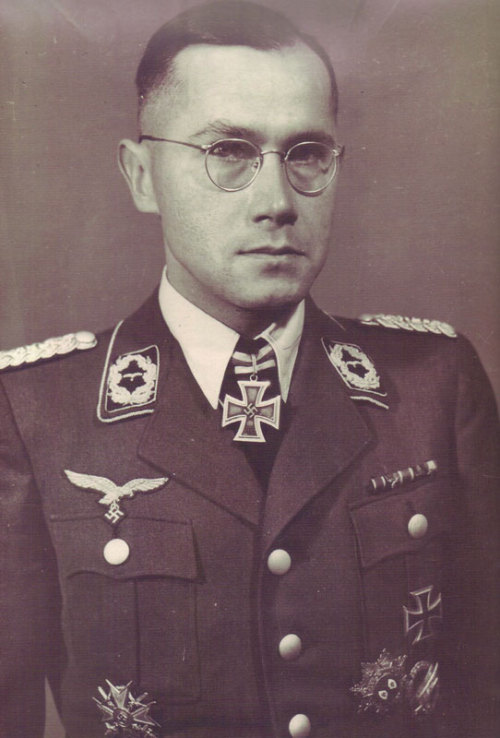 , who had won the Knight’s Cross in infantry combat on Crete, organized the evacuation of many neglected wounded. Neumann died very old age 97, on 19-05-2005 in Düsseldorf. In March a Soviet breakthrough saw Meindl’s men fighting north of Yukhonov, thereafter though suffering
, who had won the Knight’s Cross in infantry combat on Crete, organized the evacuation of many neglected wounded. Neumann died very old age 97, on 19-05-2005 in Düsseldorf. In March a Soviet breakthrough saw Meindl’s men fighting north of Yukhonov, thereafter though suffering Dr. Neumann with Hermann Goering. Neumann died old age 97, on 19-05-2005, typhoid fever, he moved to Staraya-Russa to take control of newly arrived Luftwaffe field regiments, transported piecemeal from East Prussia to serve under Heeresgruppe Nord. Some of these fought to break the encirclements of German forces at Demjansk and Kholm. By June 1942, Division Meindl – with four Luftwaffe field regiments but virtually no artillery – was holding a 60-mile front between Demjansk and Kholm, in close contact with Soviet forces and harassed by strong partisan bands in almost impassable swamps. In October 1942, Meindl’s division and SS-Division Totenkopf
 carried out a successful attack towards the Lovat river. That same month Meindl was appointed to command XIII Fliegerkorps based in Germany and tasked with the raising and training of no less than 22 new Luftwaffe field divisions
carried out a successful attack towards the Lovat river. That same month Meindl was appointed to command XIII Fliegerkorps based in Germany and tasked with the raising and training of no less than 22 new Luftwaffe field divisions
.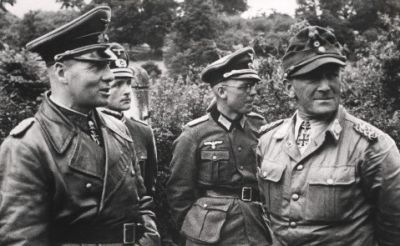

 He was promoted to Generalleutnant in this post, which he held until June 1943; after a brief spell at the Air Ministry, in July 1943 he was appointed Inspector of Luftwaffe Field Units. Meindl returned to the Fallschirmtruppe in November 1943 when he took command of the newly formed II Fallschirmkorps
He was promoted to Generalleutnant in this post, which he held until June 1943; after a brief spell at the Air Ministry, in July 1943 he was appointed Inspector of Luftwaffe Field Units. Meindl returned to the Fallschirmtruppe in November 1943 when he took command of the newly formed II Fallschirmkorps  , based in occupied France under the Oberbefehlshaber West, the corps comprised 3rd and 5th Fallschirmjager Divisions.
, based in occupied France under the Oberbefehlshaber West, the corps comprised 3rd and 5th Fallschirmjager Divisions.  Meindl was promoted to the rank of General der Fallschirmtruppe in April 1944. After the Normandy landings on 6 June 1944 his 3rd Fallschirmjager Division
Meindl was promoted to the rank of General der Fallschirmtruppe in April 1944. After the Normandy landings on 6 June 1944 his 3rd Fallschirmjager Division  fought alongside the 17th SS-Panzergrenadier Division ‘Gotz von Berlichingen’ , nickname LMA”, against US forces in the area around St Lo. The nickname LMA in reference to von Berlichingen’s famous quote Er kann mich im Arsche lecken! (“He can lick my ass!”), simplified to Leck mich am Arsch (“Lick my ass”). Erwin Wilhelm Konrad Schienkiewitz, an SS officer of the 17th SS Panzer Grenadier Division
fought alongside the 17th SS-Panzergrenadier Division ‘Gotz von Berlichingen’ , nickname LMA”, against US forces in the area around St Lo. The nickname LMA in reference to von Berlichingen’s famous quote Er kann mich im Arsche lecken! (“He can lick my ass!”), simplified to Leck mich am Arsch (“Lick my ass”). Erwin Wilhelm Konrad Schienkiewitz, an SS officer of the 17th SS Panzer Grenadier Division  38th Regiment, was accused of participation in the execution of two American airmen out of a group of seventy. The airmen were being held as prisoners of war and were executed in retaliation for the death of German soldiers who had been killed a few days earlier. The event occurred within the boundaries of Montmartin en Graignes in France on 17-06-1944. Erwin Schienkiewitz was tried at The General Military Court at Dachau. It addition to the aforementioned war crimes the accused was also a member of an organization declared illegal by the International Military Tribunal. Schienkiewitz was found guilty and sentenced to life in prison. After two months of bitter fighting against both US and British troops the corps was pushed eastward into the Falaise Pocket, and almost annihilated. Meindl was awarded the Oakleaves to his Knight’s Cross on 31-08-1944. After refitting and reinforcement, Meindl’s corps was back in the front line in the Netherlands in September, fighting against the Allied Operation ‘Market Garden’ as part of 1st Fallschirmarmee commanded by General der Flieger, Kurt Student
38th Regiment, was accused of participation in the execution of two American airmen out of a group of seventy. The airmen were being held as prisoners of war and were executed in retaliation for the death of German soldiers who had been killed a few days earlier. The event occurred within the boundaries of Montmartin en Graignes in France on 17-06-1944. Erwin Schienkiewitz was tried at The General Military Court at Dachau. It addition to the aforementioned war crimes the accused was also a member of an organization declared illegal by the International Military Tribunal. Schienkiewitz was found guilty and sentenced to life in prison. After two months of bitter fighting against both US and British troops the corps was pushed eastward into the Falaise Pocket, and almost annihilated. Meindl was awarded the Oakleaves to his Knight’s Cross on 31-08-1944. After refitting and reinforcement, Meindl’s corps was back in the front line in the Netherlands in September, fighting against the Allied Operation ‘Market Garden’ as part of 1st Fallschirmarmee commanded by General der Flieger, Kurt Student 
 . Meindl’s corps fought dispersed during the Ardennes offensive, 3rd Fallschirmjager Division under 15th Armee and 5th Fallschirmjäger Division
. Meindl’s corps fought dispersed during the Ardennes offensive, 3rd Fallschirmjager Division under 15th Armee and 5th Fallschirmjäger Division  under 7th Armee. These divisions were forced to surrender in April and March 1945 respectively, in the Ruhr and near Nürnburgring; but Meindl was decorated with the Swords on 08-05-1945, the last day of the European war. After the German surrender he was taken prisoner by the British and held in captivity until September 1947.
under 7th Armee. These divisions were forced to surrender in April and March 1945 respectively, in the Ruhr and near Nürnburgring; but Meindl was decorated with the Swords on 08-05-1945, the last day of the European war. After the German surrender he was taken prisoner by the British and held in captivity until September 1947.
More than 40 German divisions were destroyed during the Battle of Normandy. No exact figures are available, but historians estimate that the battle cost the German forces a total of around 450.000 men, of whom 240.000 were killed or wounded. The Allies had achieved this blow at a cost of 209.672 casualties among the ground forces, including 36.976 killed and 19.221 missing. In addition, 16.714 Allied airmen were killed or went missing in direct connection with Operation Overlord.
Death and burial ground of Meindl, Eugen Albert Max “Papa”.



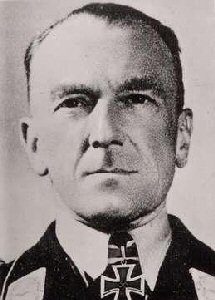
Eugen Meindl died at the age of 58, on 24-01-1951 in Donauschingen and is buried on the Stadtfriedhof of Donauschingen.


Message(s), tips or interesting graves for the webmaster: robhopmans@outlook.com





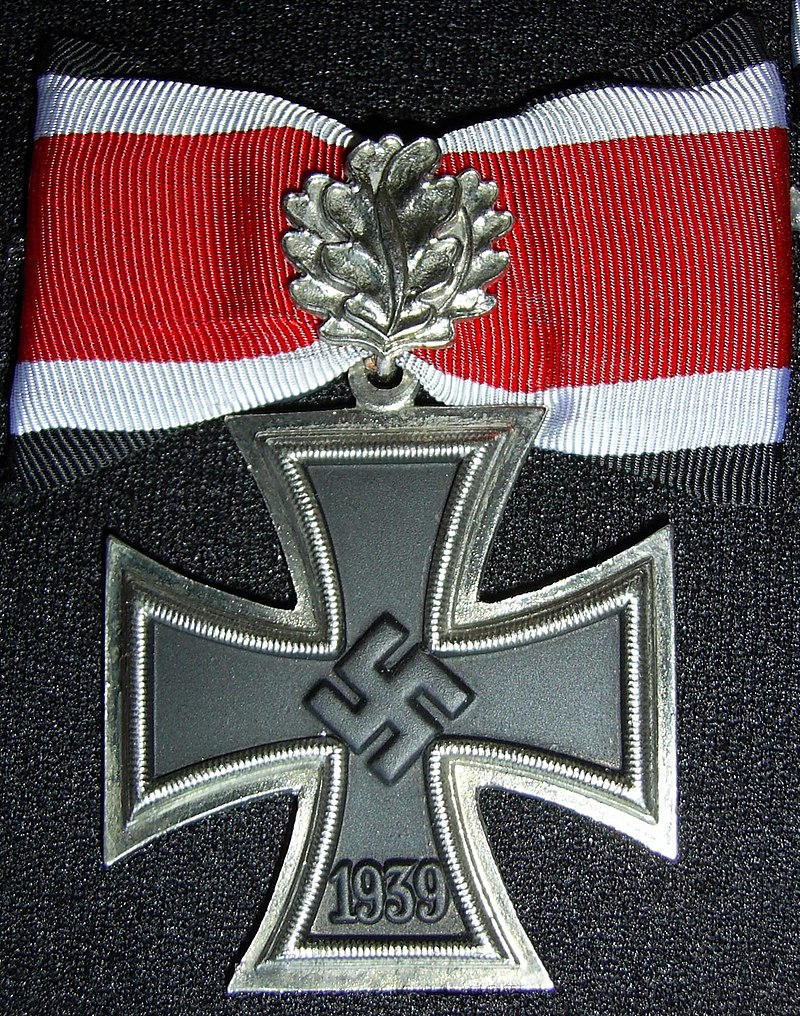



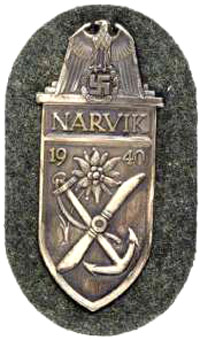
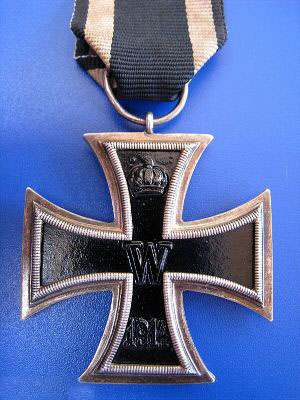











Mauricio Stutes
I got what you intend, regards for posting .Woh I am delighted to find this website through google. The outcome of the war is in our hands the outcome of words is in the council. by Homer.